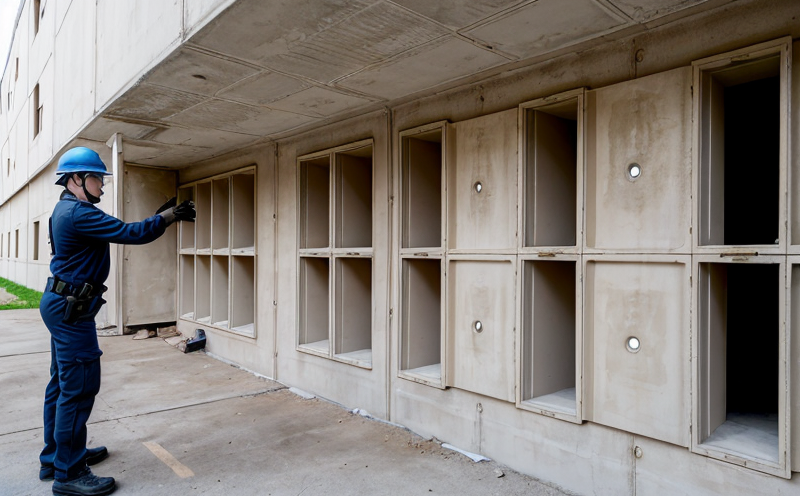Compartmentation wall inspection
In fire safety and protection systems, compartmentation walls play a critical role in mitigating the spread of fire within buildings. These walls are designed to contain fires until professional firefighting can arrive, thereby protecting occupants and reducing property damage.
The primary goal of a compartmentation wall inspection is to ensure that these structures meet specified performance criteria under various loading conditions. This includes ensuring that the wall’s integrity remains intact during a fire event, preventing smoke and flames from spreading to other areas of the building.
Compartmentation walls are typically constructed using materials such as gypsum board, steel, concrete, or a combination thereof. The performance of these walls is determined by their resistance to fire spread, structural integrity, and ability to retain smoke and heat within the fire zone. This inspection process involves rigorous testing to ensure that each wall meets the necessary standards for safety and compliance.
During an inspection, experts assess various parameters such as the fire resistance rating (FRR), which is measured in hours of resistance under specified test conditions according to international standards like ISO 6797:2014. The FRR indicates how long a wall can resist the passage of flames and hot gases before it collapses or loses its integrity.
A typical inspection process involves several key steps:
- Visual Inspection: Initial checks to identify any visible damage, gaps, or inconsistencies in the wall’s construction.
- Pressure Testing: Subjecting the wall to controlled pressure to simulate real-world conditions and assess its structural integrity.
- Heat Exposure Simulation: Exposing sections of the wall to elevated temperatures to evaluate their resistance to thermal breakdown.
The results of these inspections are documented in comprehensive reports that include detailed observations, data from tests conducted, and recommendations for any necessary remediation or repairs. Compliance with international standards such as ISO 6797:2014 is crucial to ensure the reliability of compartmentation walls.
Quality managers, compliance officers, R&D engineers, and procurement professionals benefit significantly from these inspections by gaining assurance that their facilities meet stringent fire safety requirements. This not only enhances overall building safety but also minimizes potential risks associated with non-compliance penalties or costly renovations due to substandard construction.
Applied Standards
To ensure the highest level of accuracy and consistency in compartmentation wall inspections, we adhere strictly to internationally recognized standards. The primary standard used is ISO 6797:2014, which provides a framework for assessing the fire resistance performance of building elements.
Other relevant standards include:
- EN 331: Specification for fire tests on building materials and products - Particular requirements for fire tests of building elements, including compartmentation walls.
- ASTM E119: Standard Test Methods for Fire Tests of Building Materials. This standard offers detailed procedures for conducting fire resistance tests on various construction components.
These standards provide a comprehensive set of guidelines that help ensure that all inspections are conducted in a standardized manner, allowing for consistent and reliable results across different projects and locations.
Eurolab Advantages
At Eurolab, our expertise in fire safety and protection systems inspection sets us apart from other laboratories. Our team of highly skilled engineers and technicians is dedicated to providing top-notch services that meet the highest standards.
- Comprehensive Expertise: We have a deep understanding of fire resistance testing, ensuring thorough inspections that cover all critical aspects.
- State-of-the-Art Facilities: Equipped with advanced testing equipment and laboratories, we can conduct comprehensive assessments in controlled environments.
- Strict Compliance: All our procedures are meticulously aligned with international standards like ISO 6797:2014 to guarantee accurate and reliable results.
- Experienced Personnel: Our staff comprises professionals with extensive experience in fire safety, allowing us to offer expert insights and recommendations.
Our commitment to quality and excellence ensures that clients receive the most trustworthy and precise inspections possible. This dedication translates into enhanced confidence in the safety of their buildings and compliance with regulatory requirements.





